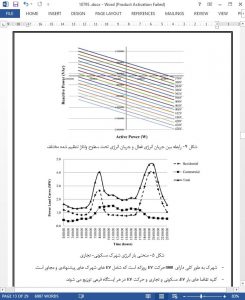Abstract
Vehicle to grid is a revolutionary technology that allows energy exchange between electric vehicles and power grid for mutual advantages. The implementation of appropriate vehicle to grid energy management system can maximize the potential of electric vehicles to provide grid ancillary services. This paper proposes an optimal vehicle to grid planning and scheduling by utilizing a novel double layer multi-objective algorithm. This optimization algorithm utilizes the grid-connected electric vehicles to perform peak load shaving and load levelling services to minimize the power grid load variance in the first layer optimization. Meanwhile, the second layer optimization minimizes the reactive power compensation for grid voltage regulation and therefore, optimizes the vehicle to grid charger's capacitor sizing. The second layer optimization algorithm utilizes an approximated formula from the simulation of a vehicle to grid charger. The proposed vehicle to grid optimization algorithm considers various power grid and electric vehicle constraints for practicality purpose. With the real time implementation of the proposed algorithm, the optimization results show that the power load curve is effectively followed the preset constant target loading, while the grid voltage is successfully regulated to the predetermined voltage level with minimal amount of reactive power supply from the optimal charger's capacitor.
1. Introduction
In recent years, the deployment of electric vehicle (EV) has become the catalyst in reducing the impact due to climate change, by alleviating carbon emissions of roadway vehicles. The optimization model and analysis has been proposed to determine the best combination of vehicle types to achieve minimal emissions with the lowest investment [1]. It is envisaged that the key findings from the optimization model and analysis shall assist the policy makers and transportation planners to prepare the transportation framework and structure to accommodate future influx of EV [2]. On the other hand, EVs may not be environmental-friendly if EV batteries are charged from the power grid with fossil fuel generation. Despite the contradiction, authors in Ref. [3] have concluded that electrification of roadway transportation is able to reduce fuel consumption and emissions without renewable energy integration. Obviously, the fuel consumption and emissions will be further reduced if renewable energy generations are widely adopted. EVs powered by hybrid solar system can also enhance the reduction of greenhouse gases [4].
7. Conclusion
This paper has presented a novel double layer multi-objective V2G optimization algorithm, which can minimize the grid load variance in the first layer and regulate the grid voltage in the second layer. The grid load variance minimization is achieved by utilizing the EV battery energy for peak load shaving and load levelling services. Meanwhile, the grid voltage regulation is accomplished by reactive power compensation using the minimal sizing of DC-link capacitor of the V2G charger. Moreover, the development of the bidirectional V2G charger with appropriate control strategies was demonstrated. The V2G charger has the capabilities of regulating the grid voltage during EV charging and discharging processes, where these relationships were formulized and used in the V2G optimization algorithm. The proposed V2G optimization algorithm has been tested under four different scenarios and the results have shown the importance of each layer's objective function. As presented in Scenario 4, the implementation of both objective functions using the proposed V2G optimization algorithm has expressed the best performance for optimal power load curve and regulated voltage profile. The practicality of real time V2G application was also demonstrated in the commercial-residential township using the proposed V2G algorithm.











